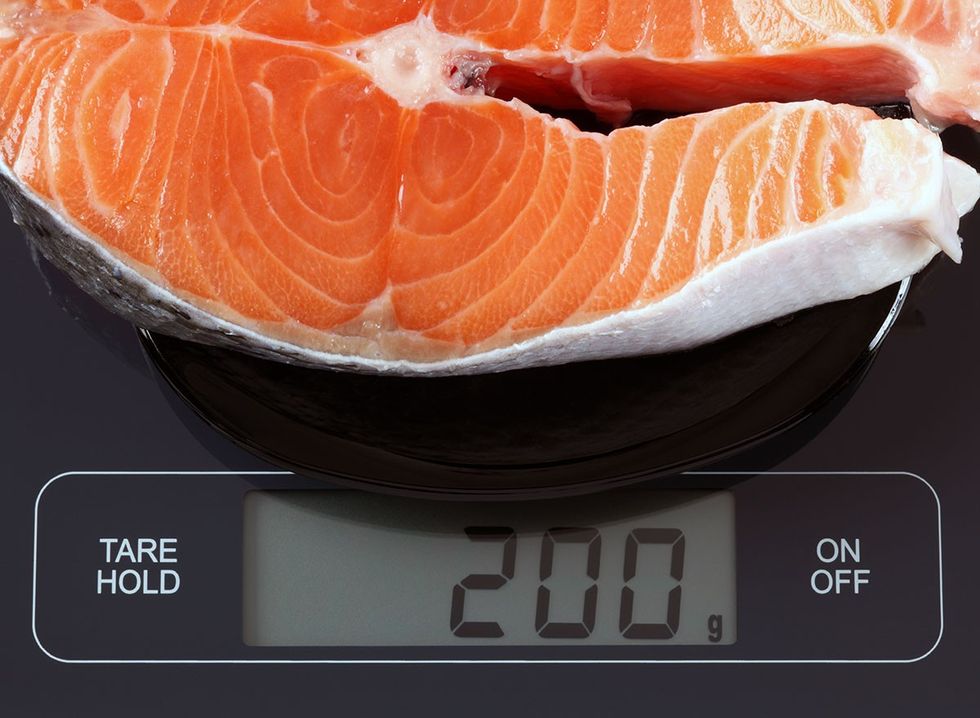Do you experience tingling in your hands, sharp pain shooting down your legs, or numbness in your feet? These could be warning signs that your body is desperately lacking essential vitamins, particularly vitamin B1. Dr. Eric Berg DC, a renowned expert in healthy ketosis and intermittent fasting, explains that vitamin deficiencies are behind most nerve problems, with B1 deficiency being the most common culprit. "The most common nerve problem that exists is something relating to either prediabetes or diabetes," says Dr. Berg. Learn how to identify these warning signs and discover the simple solutions that could reverse your nerve damage and help you live pain-free.
Warning Sign 6 Viral Nerve Pain After Stress
Certain viruses can hide in nerve bundles called ganglia, explains Dr. Berg. "What's unique about these viruses is they go into those areas, those little bundles, to evade the immune system and fly underneath the radar," he notes. These viruses can deactivate autophagy—your body's natural recycling system for damaged proteins and pathogens.
RELATED:8 High-Protein Foods with Nearly Zero Calories That Melt Fat
Stress Triggers Hidden Viruses
 Shutterstock
ShutterstockAccording to Dr. Berg, these dormant viruses often emerge after stressful events. "Cortisol is an immune suppressant. One of the most severe stresses someone can go through is emotional stress. This is why a lot of these dormant viruses come out of remission after a stress event," Dr. Berg explains.
Fight Viruses With This Amino Acid
 Frequent InfectionsShutterstock
Frequent InfectionsShutterstockThere's an important relationship between two amino acids that can help combat these viruses. "These viruses need the amino acid called arginine to exist. And it just so happens that arginine competes with another amino acid called lysine," says Dr. Berg. If you supplement with enough lysine, you can block arginine and stop viral reproduction.
How Much Lysine You Need Daily
 Shutterstock
ShutterstockDr. Berg recommends: "You have to take a lot of lysine to compete and block arginine. You want to take 1000 milligrams to 3000 milligrams every single day for a period of time to put that virus back in remission, as well as do whatever you can to reduce stress."
Warning Sign 4 Sciatica and Back Pain
 Shutterstock
ShutterstockSciatica pain usually originates from disc issues, and Dr. Berg has identified a common deficiency in these cases. "A lot of people with disc problems are deficient in copper," he states. For relief, Dr. Berg suggests "either taking a supplement with copper or just putting copper cream topically around that area in your back where it originates to reduce the discomfort."
Warning Sign 3 Wrist Pain and Weakness
 Shutterstock
ShutterstockFor the common wrist condition known as carpal tunnel syndrome, Dr. Berg points to a specific B vitamin deficiency. "This is usually a B6 deficiency," he explains. Addressing this specific deficiency can help relieve pressure on the median nerve in the wrist.
Warning Sign 2 Electric Shock Sensations

Shutterstock
The protective sheath around your nerves requires specific nutrients to stay healthy. "If you're deficient in B12, you can get electric shock-like sensations in your nervous system, very painful or even numbness," says Dr. Berg.
Your Nerve's Protective Coating
 Shutterstock
ShutterstockDr. Berg explains why this happens: "B12 is involved with the myelin sheath around the nerve. That's the outer covering that protects the nerve, insulates it, and allows the signals to transmit."
RELATED:I Got My Best Body After 50 and Here’s How You Can, Too
Autoimmune Conditions and Vitamin D3
 Replenish Stress-Depleted VitaminsShutterstock
Replenish Stress-Depleted VitaminsShutterstockFor autoimmune conditions affecting the nerves like Multiple Sclerosis (MS), Dr. Berg recommends a specific vitamin. "Vitamin D3 is essential in reducing inflammation within the nerve cells and also your brain cells," he states.
High-Dose Vitamin D3 Strategy
 5 Signs Your Body May Be Lacking Vitamin D, Say ExpertsShutterstock
5 Signs Your Body May Be Lacking Vitamin D, Say ExpertsShutterstockThe dosage needed may be substantial. "You need to take large amounts of vitamin D3, 50, 60, 70, 80,000 IU of vitamin D3 to put that condition into remission," according to Dr. Berg, who references the Coimbra protocol for this approach.
The 1 Vitamin for Nerve Health
 Shutterstock
ShutterstockThe most common nerve problems are related to high blood sugar levels. "A lot of people with diabetes end up with nerve problems in their feet. They get numbness in the toes first, and then it kind of starts traveling in the foot," Dr. Berg explains.
RELATED:I'm a Nutritionist and These are the Best Banana Recipes For Weight Loss
The 1 Fix for Diabetic Nerve Pain
 Balance Blood Sugar With Smart Food ChoicesShutterstock
Balance Blood Sugar With Smart Food ChoicesShutterstockWhat's causing this damage? "The sugar in the blood is creating such a demand for this one vitamin. That vitamin is called vitamin B1, thiamine," says Dr. Berg.
Why B1 Is Critical For Nerve Health
 Shutterstock
ShutterstockDr. Berg clarifies the relationship between diet and this deficiency: "The more carbohydrates or sugar someone consumes, the greater the need for B1. If you're prediabetic or diabetic, you have a lot of sugar going through the bloodstream. That means you're going to need even more B1 to compensate."
Try This Special Form of B1
 Shutterstock
ShutterstockHe specifically recommends a form called benfotiamine: "I would take it in the form of benfotiamine because that tends to penetrate the myelin and get right into the nerve and very quickly reverse nerve damage that's caused from high sugar."
Don't Forget This Partner Nutrient
 Shutterstock
ShutterstockFor B1 to work effectively, Dr. Berg points out another crucial nutrient: "In order for B1 to work, there's another cofactor that you need and that's magnesium." This mineral works synergistically with B1 to support proper nerve function and health.















 Shutterstock
Shutterstock Shutterstock
Shutterstock Shutterstock
Shutterstock Shutterstock
Shutterstock 9 Best Bodyweight Exercises for Muscle GainShutterstock
9 Best Bodyweight Exercises for Muscle GainShutterstock Shutterstock
Shutterstock Shutterstock
Shutterstock Shutterstock
Shutterstock
 Shutterstock/Prostock-studio
Shutterstock/Prostock-studio Shutterstock/fizkes
Shutterstock/fizkes Shutterstock
Shutterstock Shutterstock
Shutterstock Shutterstock
Shutterstock

 clairethenutritionist/TikTok
clairethenutritionist/TikTok Shutterstock
Shutterstock clairethenutritionist/TikTok
clairethenutritionist/TikTok Shutterstock
Shutterstock Diet Diva/Facebook
Diet Diva/Facebook
 Shutterstock
Shutterstock Shutterstock
Shutterstock Shutterstock
Shutterstock Shutterstock
Shutterstock Shutterstock
Shutterstock Shutterstock
Shutterstock Shutterstock
Shutterstock Shutterstock
Shutterstock Shutterstock
Shutterstock

 I'm a Nutritionist and These 9 High-Protein Snacks Keep My Clients Full While Losing 50 Pounds
I'm a Nutritionist and These 9 High-Protein Snacks Keep My Clients Full While Losing 50 Pounds
 Shutterstock
Shutterstock 2. Processed FoodsShutterstock
2. Processed FoodsShutterstock Shutterstock
Shutterstock Shutterstock/Prostock-studio
Shutterstock/Prostock-studio Shutterstock
Shutterstock Pro TipsShutterstock
Pro TipsShutterstock Shutterstock
Shutterstock Shutterstock
Shutterstock Shutterstock
Shutterstock Shutterstock
Shutterstock Don’t Drink as Much AlcoholShutterstock
Don’t Drink as Much AlcoholShutterstock Most Women on GLP-1s Are Making a Few Common MistakesShutterstock
Most Women on GLP-1s Are Making a Few Common MistakesShutterstock Soda and Sugary DrinksShutterstock
Soda and Sugary DrinksShutterstock Shutterstock
Shutterstock Eat BreakfastShutterstock
Eat BreakfastShutterstock And Improve Insulin SensitivityShutterstock
And Improve Insulin SensitivityShutterstock Belly Flab Strip Tip: Sugar and Fat Calories Leave Its Mark on Your BodyShutterstock
Belly Flab Strip Tip: Sugar and Fat Calories Leave Its Mark on Your BodyShutterstock Shutterstock
Shutterstock The Drugs Mimic the GLP-1 Hormone Naturally Produced by the BodyShutterstock
The Drugs Mimic the GLP-1 Hormone Naturally Produced by the BodyShutterstock 3. Deep-Fried ItemsShutterstock
3. Deep-Fried ItemsShutterstock